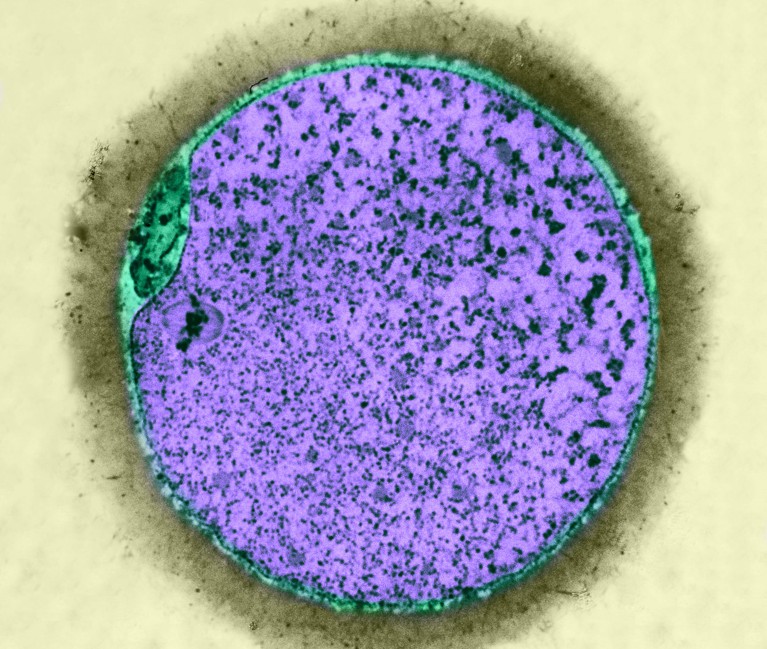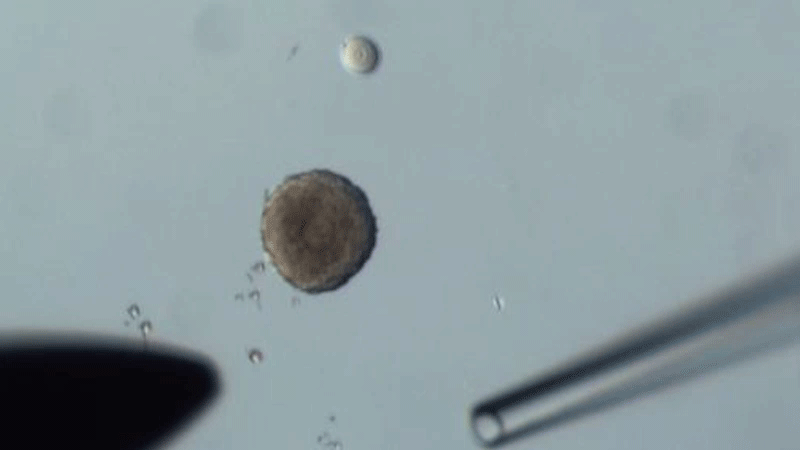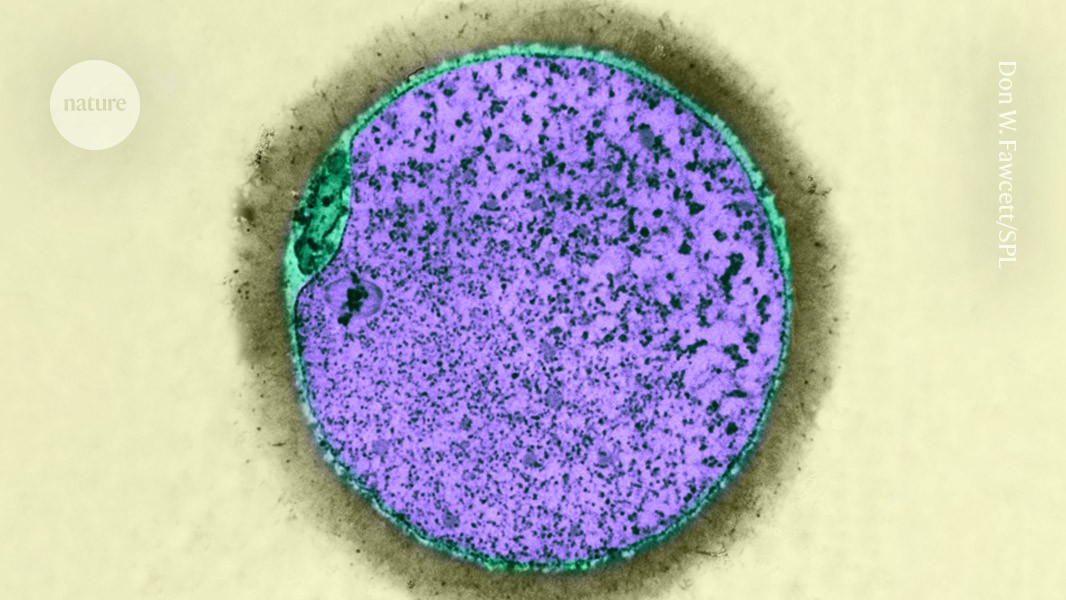
In mammalian ovaries, immature eggs, called ooctyes, develop in follicles.Credit: Don W. Fawcett/Science Photo Library
Growing immature eggs from old mice in the ovarian structures of young mice can reverse signs of ageing in the eggs1.
“Think of this as a five-star anti-ageing spa for the old egg,” says Rong Li, a cell biologist at the National University of Singapore (NUS), who co-authored a study describing the results.
When the rejuvenated eggs were fertilized, the resulting embryos were almost four times more likely to give rise to healthy pups than the eggs that matured in the old environment. The results are published in Nature Aging today.

Researchers use a pipette to remove an oocyte from its follicle and insert a donor oocyte, which then matures.Credit: HaiYang Wang et al./Nature Aging
In mammalian ovaries, ovarian structures, known as follicles, house a maturing egg, called an oocyte. Once developed, these pop out as eggs, ready for fertilization. But with age, the number and quality of oocytes decline. Researchers have investigated the role of oocyte ageing in infertility2, but Li and her colleague Wang HaiYang, also a cell biologist at NUS, focused on ageing follicles.
The latest study offers the “first solid, strong evidence” that follicles can improve the quality of maturing eggs, says Suzannah Williams, an ovarian biologist at the University of Oxford, UK. They’ve “done a fantastic job”.
Old to young
The researchers swapped out oocytes from 14-month-old mice that were close to becoming infertile and placed them into the follicles of 2-month-old mice, which were in their reproductive prime — and vice versa.
They found that the quality of old oocytes improved when grown in young follicles compared with those grown in old follicles. Specifically, after the youthful treatment, the oocytes had fewer chromosomal abnormalities, improved mitochondrial function and their gene expression and metabolite-production profiles better resembled those of young oocytes.
Meanwhile, young oocytes grown in old follicles showed increased signs of ageing.
The researchers fertilized the eggs and transferred them into surrogate mice. Embryos that came from rejuvenated oocytes were significantly more likely to give rise to a pup than old oocytes grown in old follicles. However, the success rate didn’t reach that of pups that arose from young oocytes grown in young follicles.
The results suggests that oocyte ageing is partially reversible, and that the surrounding cellular environment plays an important part in the process, says Li.
More connections
The researchers took a closer look at what could be driving oocyte revival. Tunnel-like structures that connect follicles to oocytes, known as transzonal projections (TZPs), pump important molecules for nourishing oocytes. The researchers found a higher density of TZPs in old oocytes embedded in young follicles compared with those embedded in old follicles.
If the findings translate to people, Li suggests that this could lead to cell therapies that improve egg quality in older people.
But Williams says that this translation will be tricky, given the difficulties of acquiring sufficient donor tissue and growing them for long enough in the laboratory. Still, she says “it’s a proof of concept”.


